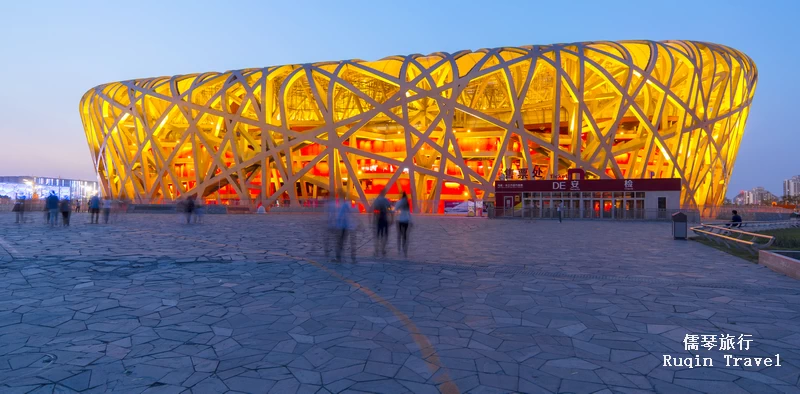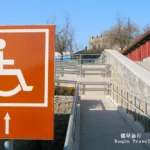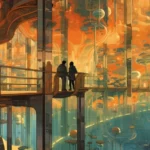Beijing’s iconic 2008 Olympic Games venues, the Bird’s Nest (Beijing National Stadium) and Water Cube (Beijing National Aquatics Centre), continue to captivate visitors worldwide.
These architectural marvels are not just symbols of a historic sporting event but also must-see destinations for those exploring Beijing. This ” Beijing Bird’s Nest Stadium & Water Cube Travel Guide” offers all the essential details for a memorable visit to these remarkable landmarks.
How to Get There
Reaching the Bird’s Nest and Water Cube is a breeze thanks to Beijing’s efficient subway system. Start your journey on Subway Line 10, switching at Beitucheng Station to Line 8. You’ll arrive at Olympic Sports Center Station or Olympic Park Station, both gateways to the Olympic Park. The park is open to the public at no cost.
For more insights on navigating Beijing’s metro, check out our comprehensive guide. Alternatively, numerous bus routes including 409, 426, and 645 serve the area. However, taxis are less practical due to parking challenges, often leading to a lengthy walk to the park.
Best Time to Visit
While daytime offers a detailed view of the Bird’s Nest and Water Cube, an evening visit transforms the experience. The Water Cube mesmerizes with its nightly color transformations, appearing as a magical, glowing box.
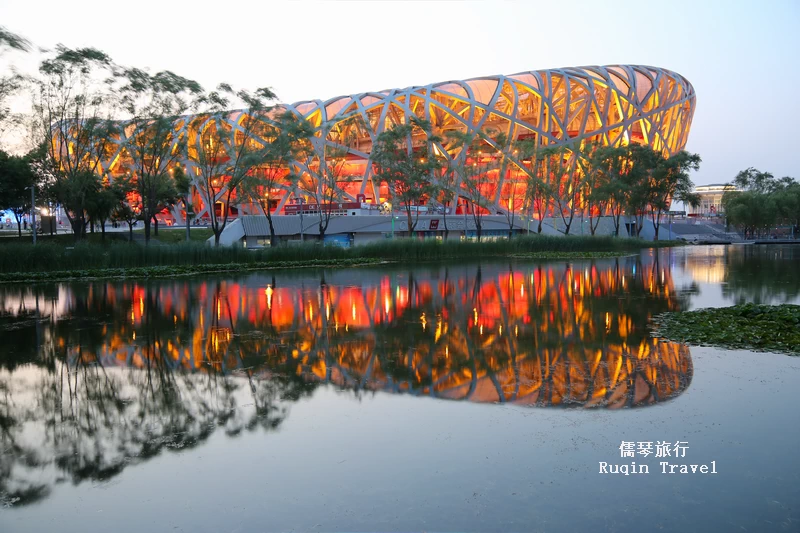
Solar panels on the Bird’s Nest capture sunlight, illuminating the structure at night, offering a reflective and awe-inspiring sight. Summer days can be intensely hot, with limited shade, making evenings a more comfortable and visually striking option.
External and Internal Tours
Your visit can vary based on interest and time. A quick exterior photo session might suffice for some, but if architectural details fascinate you, exploring inside is highly recommended.
The Bird’s Nest opens from 9:00 am to 6:00 pm, with an entry fee of RMB 50. The Water Cube costs RMB 30 for general admission, RMB 200 for the water park, and RMB 50 for swimming.
Weekdays are ideal for avoiding crowds, as weekends and public holidays attract more visitors, leading to longer waits for tickets.
The Heart of Olympic Park
The Bird’s Nest and Water Cube, pivotal Olympic structures, draw thousands daily. On average, 20,000 to 30,000 visitors explore the Olympic Park each weekday, with about 5,000 entering these iconic buildings. Primarily sustained by ticket sales and comprehensive management, these venues cover their maintenance costs through this income.
The local government and management bodies plan to repurpose these sports venues into leisure and entertainment hubs. This transformation includes dining, recreational activities, events, conference facilities, hotels, and sports events.
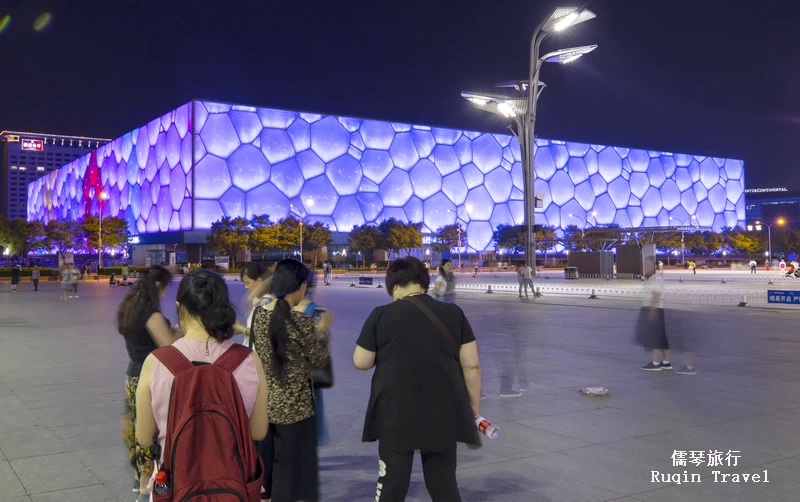
Notably, an Olympic-themed high-end restaurant in the Bird’s Nest offers a unique dining experience. In winter, the Bird’s Nest converts into a ski resort for seasonal festivals. Additionally, the Water Cube recently introduced a water amusement park, priced at RMB 200 per entry, while maintaining its regular entry fee at RMB 30.
Beyond these two, the Olympic Park houses other venues like the Beijing National Indoor Stadium, the archery range, tennis courts, and the hockey rink at North Olympic Forest Park. Each offers its own piece of Olympic history and is worth exploring.
Exploring Beyond the Iconic Duo
While the Bird’s Nest and Water Cube are the highlights, the Olympic Park’s expanse offers more. Stroll around to discover other Olympic venues like the National Indoor Stadium, the archery field, tennis courts, and the hockey rink in the North Olympic Forest Park. These facilities, each with their own Olympic stories, add depth to your visit.
The park itself is a green oasis, perfect for leisurely walks or picnics. It’s a juxtaposition of nature and modern architecture, where locals and tourists alike find a tranquil escape from the city’s hustle. Seasonal events, from flower exhibitions in spring to ice festivals in winter, keep the park vibrant throughout the year.
For food enthusiasts, the area around the park offers a range of dining options. From local Chinese delicacies to international cuisine, there’s something to satisfy every palate. Shopping enthusiasts can find souvenir shops selling Olympic-themed merchandise, perfect for keepsakes or gifts.
Tips for wheelchair users
Providing travel tips for wheelchair users visiting the Bird’s Nest Stadium and Water Cube in Beijing is essential to ensure an accessible and enjoyable experience. Here are some tailored tips:
Accessibility at the Venues
- Wheelchair Ramps and Elevators: Both the Bird’s Nest and the Water Cube are equipped with ramps and elevators, making most areas accessible to wheelchair users.
- Designated Viewing Areas: The Bird’s Nest Stadium offers designated viewing areas for wheelchair users, ensuring a good view of any events or exhibitions.
- Accessible Restrooms: Look for restrooms marked with the wheelchair symbol. These are designed to be more spacious and accommodate wheelchair users.
- More information on Beijing Wheelchair Accessible Travel Guide.
Photography Tips
Capturing stunning photographs of the Beijing Bird’s Nest Stadium and Water Cube requires a blend of technical skill and creative perspective. Here are some photography tips tailored for these iconic landmarks:
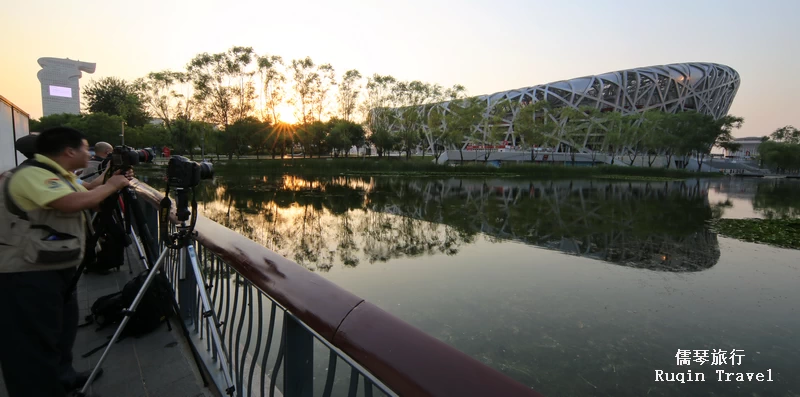
Understanding the Architecture
- Study the Structures: Familiarize yourself with the unique architectural features of both buildings. The Bird’s Nest’s interlocking steel beams and the Water Cube’s bubble-like facade offer distinct textures and patterns.
- Play with Perspectives: Experiment with different angles. For instance, capturing the Bird’s Nest from a lower angle can emphasize its grandeur, while a close-up of the Water Cube can highlight its intricate details.
Lighting and Time of Day
- Golden Hour: Shoot during the golden hour (shortly after sunrise or before sunset) for a warm, soft light that accentuates the buildings’ textures.
- Night Photography: Both buildings are beautifully illuminated at night. The Water Cube, in particular, displays vibrant colors that make for striking images.
- Avoid Harsh Midday Sun: Midday light can create harsh shadows and overexposed spots, especially on the reflective surfaces of the Water Cube.
Tips for a Fulfilling Visit
To maximize your experience, here are some tips:
- Plan your visit: Check the latest opening hours and ticket prices online.
- Wear comfortable shoes: Expect a fair amount of walking, both inside and around the venues.
- Stay hydrated, especially if visiting in summer.
- Consider hiring a local guide for in-depth insights into the architecture and history of these Olympic landmarks.
- Visit the nearby attractions, including the Olympic Forest Park and the National Indoor Stadium.
- Capture your memories: Photography is allowed but respect any no-photo zones.
The Beijing Bird’s Nest Stadium and Water Cube stand as testaments to modern architectural ingenuity and the spirit of the Olympics. Whether you’re an architecture enthusiast, a sports fan, or simply looking for a unique experience in Beijing, these venues promise an unforgettable visit.
With easy access, flexible visiting options, and a plethora of activities, they are essential stops on any Beijing itinerary. Follow this guide to ensure a smooth, enjoyable journey through these iconic Olympic landmarks.

